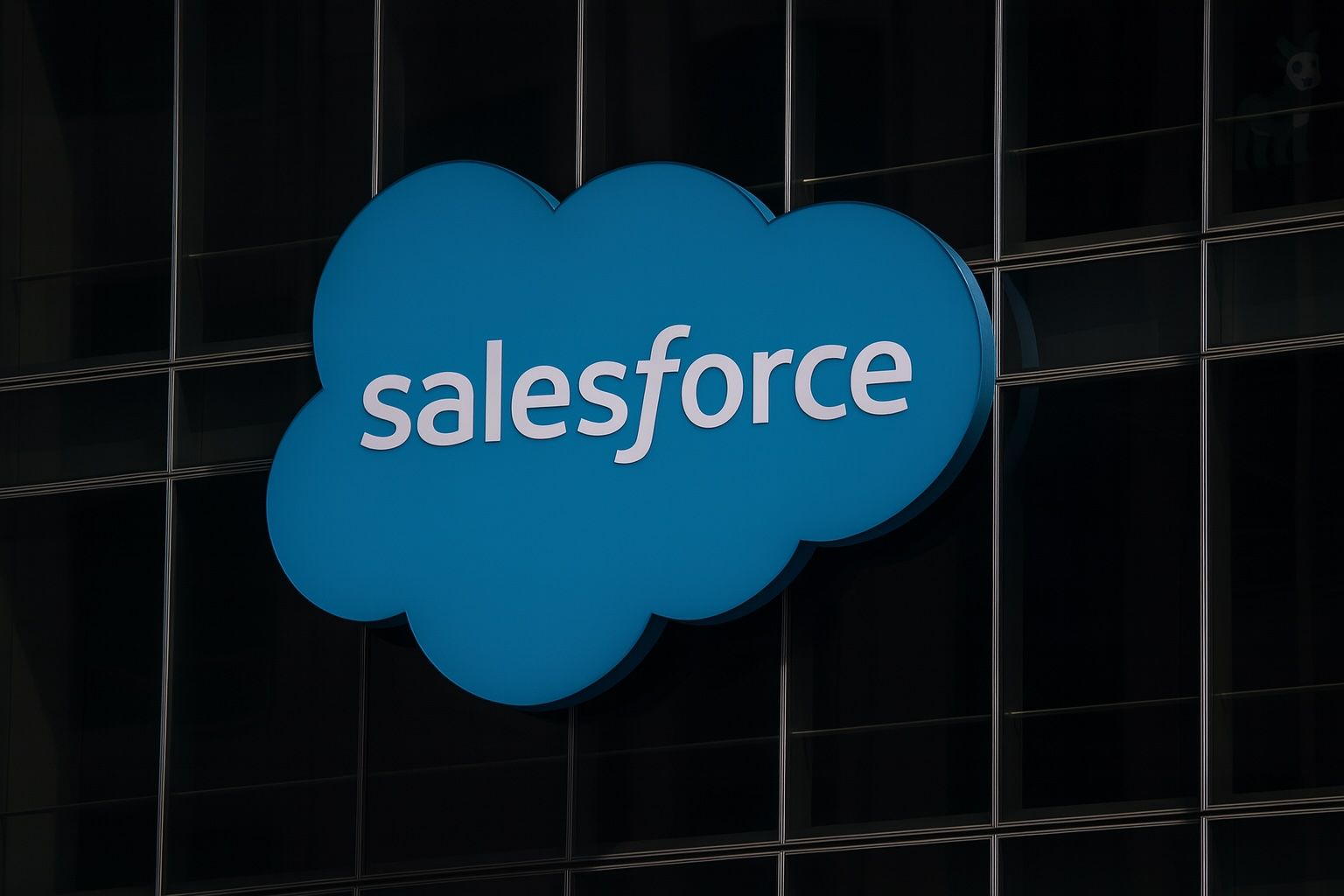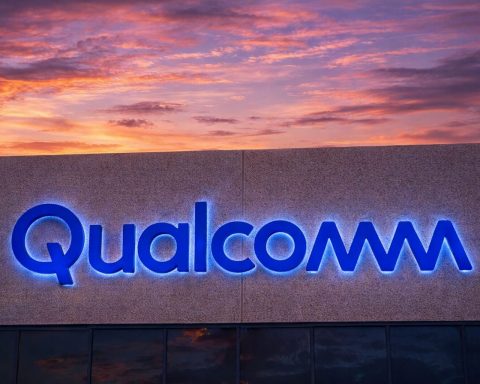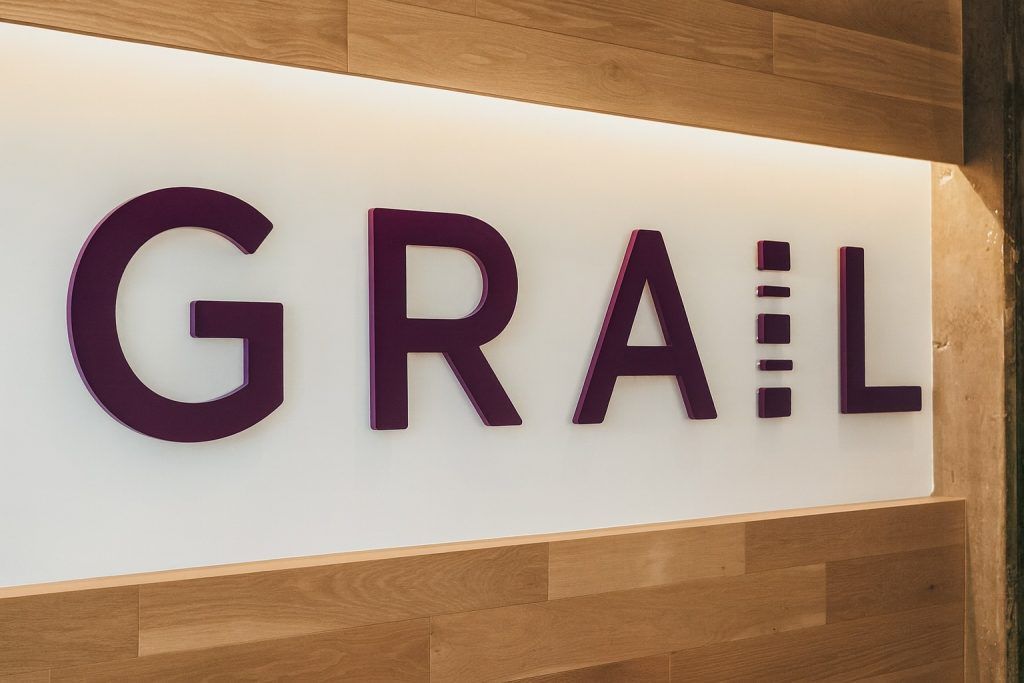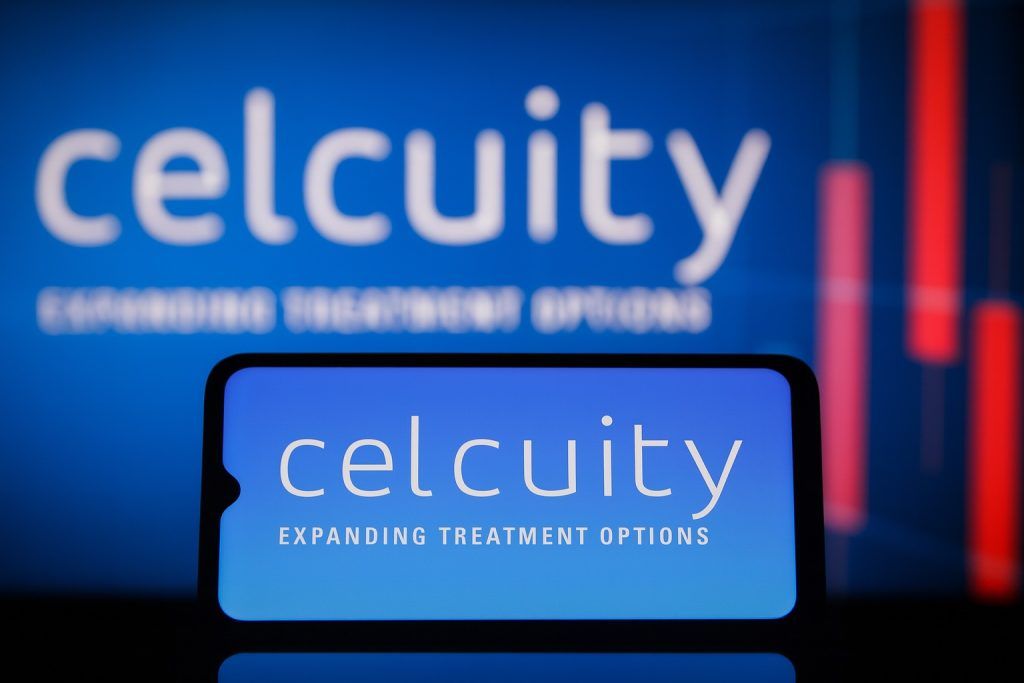- Current Price & Recent Moves: Salesforce (NYSE: CRM) traded around the mid-$240s on Monday, Oct. 20, 2025, steady after a late-week pop. The stock jumped nearly 7% (to ~$253) on Thursday after new long-term targets were revealed [1], but eased to close Friday near $243. Year-to-date, CRM remains down roughly 27–28%, underperforming the S&P 500 and tech peers [2] [3].
- AI Ambitions Fuel Rally: At its Dreamforce 2025 conference, Salesforce unveiled a bold goal to exceed $60 billion in annual revenue by 2030, topping Wall Street’s ~$58.4B estimate [4]. CEO Marc Benioff’s aggressive AI-driven roadmap – including the new “Agentforce” AI platform – sent investors scrambling to buy: CRM shares spiked ~4–5% in after-hours trading on the news [5]. Executives claim growth is “reaccelerating” after a slower patch [6], and are targeting 10%+ annual sales growth through FY2030.
- Financial Snapshot: Salesforce’s latest quarter (Q2 FY2026) beat expectations with revenue of $10.2 billion (up 10% YoY) and record profit margins [7]. The company raised its full-year outlook slightly (to ~$41.2B revenue) and expanded its stock buyback plan to $50 billion [8]. However, cautious guidance for the current quarter (fiscal Q3) initially spooked investors – Salesforce signaled slower short-term growth amid a soft economy [9] [10], which contributed to a September slide in the stock.
- Analyst Sentiment: Wall Street remains broadly bullish on CRM. About 33 analysts rate Salesforce a “Buy”, with an average 12-month price target around $330 (implying ~35–40% upside) [11]. Post-Dreamforce, Raymond James reiterated a Strong Buy with a $375 target, calling Salesforce’s new goals “powerful ammo against key bear debates” [12]. Yet not everyone is sold – RBC Capital markets has a $250 target (hold/sector-perform) and at least one firm (Bernstein) still rates CRM “Sell” (~$221 target) [13], citing concerns that lofty AI promises may be tough to achieve.
- AI Moves & Outlook: Salesforce is doubling down on AI to reignite growth. Its Agentforce AI platform (now on “Agentforce 360”) is being embedded across products and into popular tools like Slack and ChatGPT [14]. Over 12,000 customers already use Salesforce’s new AI “agents,” and the company sees potential for a 3–4× increase in AI-driven revenue from those clients as adoption deepens [15]. Salesforce has inked partnerships with OpenAI, Anthropic and others, and plans to invest heavily in AI talent (including $15B in San Francisco and $1B in Mexico) to stay ahead [16]. Short-term, a shaky economy and IT budget cuts are headwinds, but long-term Salesforce and many analysts believe AI could catalyze a return to double-digit growth, driving substantial upside for the stock [17] [18].
Stock Performance: Bumpy Ride Followed by AI-Fueled Bounce
After a bumpy few months, Salesforce stock has shown signs of stabilizing in October. Shares hit a multi-month low of $235.69 on Oct. 1 amid broader market weakness and lingering post-earnings worries [19]. That slump — roughly a 7% drop in September — was fueled by soft guidance from management on future sales, which tempered expectations despite strong last-quarter results [20]. Early in October, an alarming (though ultimately indirect) security scare added to jitters: a hacker group claimed to have stolen data from Salesforce clients’ databases, sparking headlines about a potential breach [21]. Salesforce assured that its own systems weren’t compromised, but the incident was a stark reminder of cybersecurity risks in the cloud business [22].
Heading into mid-October, however, sentiment shifted. By last week, CRM stock was oscillating in the mid-$230s and finding a floor [23]. The real jolt came during Salesforce’s Dreamforce 2025 event (Oct. 15–16): buoyed by bullish announcements (particularly a 2030 revenue bombshell, detailed below), the stock surged back above $240. In fact, CRM jumped from about $237 on Oct. 15 to over $250 on Oct. 16 in one day [24], before settling around $243 at week’s end.
As of Monday afternoon (Oct. 20), Salesforce shares hovered near $244, roughly flat on the day and consolidating the prior week’s gains. Despite this rebound, the stock is still down about 27% year-to-date [25] – a sharp contrast to the broader market. (For context, the S&P 500 is modestly higher in 2025, and tech giants like Microsoft have climbed ~22% YTD [26] on the back of AI optimism.) Salesforce’s slide this year also trails rival enterprise software makers: Oracle’s stock, for example, nearly doubled at one point and remains up about 76% YTD [27] thanks to strong cloud demand, while Adobe’s shares have seen declines similar to CRM (down roughly 25% in 2025) [28]. In other words, Salesforce has lagged its peers, making last week’s bounce a welcome relief for long-suffering shareholders.
Volatility has been a theme – Salesforce’s beta is above 1.2, meaning the stock tends to swing more than the market average [29]. That cuts both ways: on market up days, CRM often outperforms, but it can drop harder on down days [30]. The coming weeks will test whether Salesforce’s recent AI-fueled rally has staying power, or if renewed economic worries will pull the stock back into its prior trading range.
AI Ambitions Unveiled at Dreamforce 2025
The biggest catalyst for Salesforce’s mid-October surge was undeniably Dreamforce 2025, the company’s flagship conference in San Francisco. There, CEO Marc Benioff and his team pulled back the curtain on an ambitious roadmap aimed at restoring Salesforce’s high-growth momentum. The headline announcement: Salesforce is forecasting over $60 billion in revenue by 2030, significantly above what Wall Street had been expecting [31]. (Analysts had pegged 2030 sales around $58.3B [32], so Salesforce’s target essentially adds an extra $1.5–2B on top of that.) This rosy forecast implies the company believes it can sustain 10%+ annual growth for the next five years – a bold bet for a tech giant of Salesforce’s size.
Investors reacted swiftly to the $60B bombshell. Salesforce’s presentation came late on Oct. 15, and the stock leapt nearly 4% in after-hours trading that evening [33] as news of the forecast spread. By the next morning (Oct. 16), CRM opened sharply higher and kept climbing, at one point up around 6–7% from its pre-Dreamforce price [34]. The rally reflected renewed confidence that Salesforce’s AI push could reaccelerate its growth. “We have had some lower-stage growth for a while… that is reaccelerating,” CFO Robin Washington told investors at the event, underscoring management’s message that the company’s slowdown is behind it [35]. She and other executives expressed excitement about a “return to double-digit growth” ahead [36].
Central to Salesforce’s pitch was its investment in Artificial Intelligence across the platform. The company officially rolled out Agentforce 360, the latest version of its AI agent framework that’s now integrated throughout Salesforce’s clouds. Benioff framed this as ushering in the era of the “Agentic Enterprise” – where AI “agents” automate tasks and collaborate with human workers to boost productivity [37]. As part of this vision, Salesforce showcased deepening partnerships with AI leaders. For example, OpenAI’s tech will be more tightly woven into Salesforce’s products: customers will soon be able to access Salesforce’s Agentforce AI directly within ChatGPT [38]. In practical terms, a sales rep could ask ChatGPT (augmented with Salesforce data) to generate a proposal or retrieve a customer’s history without ever leaving the chat interface [39]. Likewise, Salesforce announced that Slack, its workplace messaging app, is being transformed into “the new interface” for Salesforce services – with AI bots monitoring Slack channels to answer employees’ questions and perform actions in real time [40]. Another highlight was Agentforce Voice, a new capability letting AI agents handle phone calls in natural language (think customer support calls triaged by AI) [41].
These AI features aim to tackle real business pain points – Benioff even quipped that Agentforce could help “fix a $7B problem,” alluding to the costly inefficiencies in customer service and sales processes that AI might solve [42]. By showcasing successful early deployments (Salesforce says Agentforce is already its fastest-growing product ever [43], with big customers like Dell and PepsiCo on board [44]), the company is trying to convince investors that its AI bet isn’t just hype. Notably, Salesforce is also acquiring data analytics firm Informatica for $8B – a move to bolster its data management and integration tools, which will feed into its AI systems [45] [46].
For investors, Dreamforce 2025 delivered what one analyst called “the growth story Wall Street’s been craving.” Salesforce essentially told a narrative of renewed expansion: its core cloud business is stable, and AI will be the growth catalyst that propels the company into the next decade. The optimism from the event gave the stock a clear (if perhaps short-term) boost. The question now is whether Salesforce can execute on these grand plans – and how quickly these AI innovations will translate into tangible financial results, which the market ultimately demands.
Financial Drivers: Solid Quarter, Softer Guidance
Underneath the AI buzz, Salesforce’s fundamentals have been a mixed bag of strong execution and cautious outlook. In early September, the company reported robust results for the quarter ending July 31 (its fiscal Q2 2026). Revenue hit $10.2 billion, up 10% year-over-year, which slightly beat analyst estimates [47]. Perhaps more impressively, Salesforce’s profitability improved markedly: the firm achieved record operating margins in that quarter [48], thanks to a wave of cost-cutting initiatives over the past year. (Salesforce, like many tech companies, has implemented layoffs and efficiency drives – shedding thousands of jobs and streamlining operations to boost margins.) These efforts are paying off in earnings. Salesforce’s trailing P/E ratio is now around 34 and its forward P/E ~20 [49], indicating that investors expect earnings to accelerate in coming years as the company grows profits faster than revenue. For a high-growth software name, a 20× forward earnings multiple is relatively cheap – well below peers such as Microsoft or Oracle (which trade ~31× forward earnings) [50]. This lower valuation reflects the stock’s underperformance, but also suggests any positive surprise in Salesforce’s growth trajectory could yield an outsized stock reaction as sentiment (and multiples) normalize upward.
Salesforce also demonstrated shareholder-friendly moves: it authorized a massive $20 billion increase to its stock buyback program, bringing the total repurchase plan to $50B [51]. This kind of large buyback is a strong signal that management sees value in its own stock price. In addition, Salesforce pays a modest dividend (it initiated dividends in 2023), though the yield remains under 1%. Combined with buybacks, the company is returning significant capital to investors, while still investing in R&D and strategic acquisitions (like the $8B Informatica deal mentioned above).
Despite the solid Q2 performance, Salesforce struck a guarded tone on guidance, which is what initially dented the stock. Management’s outlook for the October quarter (fiscal Q3) came in a bit below analysts’ expectations [52]. In September, Salesforce guided for roughly 11% revenue growth in Q3 – healthy, but not the blockbuster acceleration some hoped for given the AI product launches. They indicated some large enterprise clients are taking longer to close deals or scaling back spending amid economic uncertainty [53]. This cautious forecast “caused an immediate sell-off” in Salesforce shares after the Q2 report [54]. It was a reminder that, however exciting the future vision, the company is still grappling with near-term headwinds: higher interest rates, cost-conscious customers, and intense competition in cloud software are all creating a more challenging environment than a few years ago. As Reuters noted, an “uncertain macro environment and volatile customer spending” are weighing on growth prospects across the cloud industry [55].
Another overhang has been concern about monetizing AI. Salesforce’s much-publicized AI features (like Einstein GPT last year and now Agentforce) are still relatively new to the market, and some clients are in the experimental phase. In fact, Salesforce acknowledged that AI uptake hasn’t yet translated into big revenue – it forecasted slower short-term sales from Agentforce than some analysts anticipated [56]. This “lagging monetization” of AI is something the company hopes to overcome with the flurry of new products and partnerships announced at Dreamforce. But for now, it’s a factor in their conservative guidance.
On the positive side, Salesforce’s core businesses – Sales Cloud, Service Cloud, Marketing/Commerce Cloud, etc. – are holding up reasonably well. Analysts note that demand for CRM (customer relationship management) software remains stable even in a tougher economy [57], since managing customer data is mission-critical for companies. That provides a baseline of growth that Salesforce can build on. If its AI offerings gain traction, they could provide a new upsell cycle to existing customers (and attract new ones), layering on additional growth in 2026 and beyond.
What Do Analysts and Experts Say?
Despite Salesforce’s stock slump in 2025, the majority of Wall Street analysts remain bullish on the company’s prospects. As mentioned, roughly thirty analysts currently have Buy or Outperform ratings on CRM [58]. The median 12-month price target is around $330 [59], which suggests analysts, on average, see the stock recovering strongly over the next year. If Salesforce delivers on even a portion of its AI ambitions, many experts argue the stock is undervalued at current levels in the $240s.
Several analysts raised their targets or ratings following Dreamforce. Raymond James, for example, came out reiterating a “Strong Buy” and a $375 price target after the event [60]. The firm cheered Salesforce’s 2030 outlook and AI strategy, calling the new long-term targets “powerful ammo against key bear debates” [61]. In other words, Salesforce addressed many of the concerns skeptics had – such as where future growth would come from – by laying out a credible plan for double-digit expansion and showing tangible progress in AI products. Another upbeat voice, Evercore ISI, reportedly argued that Salesforce’s valuation (at ~5.7× sales) looks attractive given its cloud leadership and expanding margins [62] [63].
That said, not everyone on the Street is convinced. Bearish and neutral analysts highlight several risk factors. One is the competitive landscape: Salesforce may be the market-share leader in CRM software, but rivals like Microsoft, Oracle, and Adobe aren’t standing still. Microsoft, for instance, is baking AI copilot features into its Dynamics 365 CRM platform and has deep pockets to bundle products (plus its dominant Office suite as leverage). Oracle has been aggressively promoting its own cloud applications and recently experienced a stock surge, partly due to AI enthusiasm in its database and applications business. As a result, some analysts worry Salesforce could lose share or face pricing pressure, especially if IT budgets tighten. In fact, Salesforce’s decision to expand into IT service management (a space dominated by ServiceNow) using its Agentforce AI was seen as a shot across the bow – but also means taking on another formidable competitor [64].
Another concern is integration and execution risk. Salesforce has grown not just organically but through big acquisitions (Slack, Tableau, MuleSoft, etc.). Blending these into a cohesive platform has been a multi-year endeavor. Now, layering AI “agents” across all these services is a complex task. Analysts at Jefferies (as summarized on Yahoo Finance) maintain a Buy rating with a $325 target but caution that Salesforce could stumble on “integration challenges from past acquisitions” and the usual cyclical spending patterns of enterprise clients [65]. In short, during economic downturns, even interested customers might delay buying new AI add-ons, which could slow Salesforce’s plan.
Then there’s the show-me factor: Salesforce made a lot of big promises for 2026–2030, and some in the financial community want to see proof that AI can tangibly boost revenue beyond a demo stage. A research note from RBC Capital Markets recently observed that “investor enthusiasm around Agentforce has moderated” after the initial hype [66]. Many companies talk up AI, but the real-world adoption in large enterprises can be slow. Case in point: industry surveys indicate as much as 95% of enterprise AI projects fail to go beyond pilot programs and into production use [67]. Salesforce is aiming to break that “pilot purgatory” pattern – but until it shows a meaningful uptick in sales growth attributable to its AI products, some analysts are reserving judgment.
This divergence in viewpoints is reflected in the wide range of price targets on CRM. They span from about $221 on the low end to $430 at the high end [68]. The low end (e.g. Bernstein’s ~$221 target) essentially implies Salesforce’s stock could drift lower if AI fizzles out or macro conditions worsen. The high end ($400+ targets) implies a return toward Salesforce’s all-time high (~$370 in late 2021) and then some [69] – achievable only if the company fires on all cylinders and perhaps benefits from a more bullish market environment.
For now, the consensus leans positive: more than 30 analysts say “Buy,” versus only a handful advising “Hold” or “Sell.” The average outlook of ~$330/share shows optimism that Salesforce will regain a lot of lost ground over the next year [70]. As always, though, investors should take price targets with a grain of salt – they are educated guesses, not guarantees. What matters is the reasoning behind them, and at the moment the bulls are pointing to Salesforce’s strong execution (beating estimates, improving margins) and new AI products as reasons the growth story will reaccelerate. Bears counter with competitive pressures and the possibility that 2025’s AI euphoria may not immediately translate into financial results.
Outlook: Cautious Near Term, Optimistic Long Term
Looking ahead, Salesforce’s trajectory likely depends on two key factors: the macroeconomic climate in the next few quarters, and the company’s ability to capitalize on its AI initiatives to drive growth.
Short-term (next 3–6 months): The environment remains challenging. High interest rates and global economic uncertainty have led many companies to tighten their software budgets [71]. Salesforce has already felt some of that pressure, as seen in its tempered near-term guidance. Don’t be surprised if the upcoming holiday-quarter results (Q3 FY2026, which Salesforce will report in late November) show only modest growth in the high single digits to low teens. Another factor is that Salesforce’s fiscal year ends in January, so some customers may defer purchases to early 2026 budgets. In the near term, the stock could remain range-bound until there’s clearer evidence that the AI products are boosting sales or until macro conditions improve. Any big moves will likely be news-driven: for example, if Salesforce announces a major new customer win for Agentforce, or conversely if economic data deteriorates or a competitor issues a warning, CRM’s stock could react accordingly. Investors should also watch out for the resolution of the recent cyber incident – while Salesforce itself wasn’t hacked, any reputational damage or client hesitancy around security could be a minor short-term headwind [72].
In addition, Salesforce’s valuation is now in a more reasonable zone (about 5.5× forward sales and 20× forward earnings [73]). This means the stock isn’t priced for perfection as it arguably was in 2021. However, it also means the burden of proof is on Salesforce to show that growth can accelerate again; if upcoming earnings or guidance disappoint, there may be limited patience and the stock could retest lows. On the flip side, any upside surprise – say, an early revenue bump from AI or an uptick in demand – could spark a strong rally because expectations are relatively subdued. The company’s ongoing $50B buyback will also provide support, as Salesforce can repurchase shares on dips (indeed, Salesforce has been buying back stock aggressively this year, essentially signaling that they find the current price attractive).
Long-term (1–5 years): Salesforce is clearly painting a picture of renewed growth and innovation through 2030. If the economy avoids a severe downturn and IT spending gradually re-accelerates, Salesforce’s targets of 10%+ annual revenue growth could very well be attainable. Achieving $60B in revenue by 2030 would mean roughly doubling Salesforce’s annual sales from the ~$30B range in FY2024 – a significant leap, but not impossible for a company that grew exponentially over the past two decades. Importantly, Salesforce’s plan is not just about top-line growth; it’s also about operating leverage. With all the cost cuts and efficiency measures in place, any re-acceleration in revenue could have an outsized effect on earnings (since margins would expand further). That is part of the bull case: Salesforce might enter a phase of expanding both revenue and profit margins, a combination that tends to drive stocks higher.
The company’s bet on AI could redefine its value proposition. By embedding AI deeply into its platform, Salesforce is aiming to increase the value (and price) of its software to customers. If Agentforce and related features truly help companies automate work, find sales opportunities, or serve customers faster, Salesforce can not only sell more subscriptions but possibly charge a premium for AI capabilities. There’s also a huge addressable market if Salesforce successfully moves into new areas like IT service management and even workflow automation beyond CRM [74]. Every expansion opens a new front against competitors, but also new revenue streams. For instance, competing in IT service management puts it up against ServiceNow; pushing further into analytics pits it against players like Adobe or Oracle Analytics. Salesforce’s sprawling product suite (Sales Cloud, Service Cloud, Marketing Cloud, Tableau analytics, MuleSoft integration, Slack, etc.) now fortified with AI, could make it a one-stop-shop for enterprises’ customer-facing software needs – a very sticky position to be in.
That said, execution is paramount. The next couple of years will show whether Salesforce can turn AI hype into real growth. Skeptics will be watching metrics like deferred revenue, remaining performance obligation (RPO), and AI-related deal bookings for signs that Agentforce is moving the needle. Salesforce’s management sounded confident at Dreamforce – with CEO Benioff proclaiming, “We’re redefining the future of enterprise software – with humans and AI working together to achieve unprecedented levels of productivity.” [75]. The company also noted that its Data Cloud and AI products already hit $1.2B in annualized revenue in Q2 (up 120% YoY) [76], although that’s still a small fraction of total revenue. If those numbers compound further, they’ll underpin the double-digit growth narrative.
Bottom Line: Salesforce’s stock is at a crossroads. The recent bounce shows that investors are willing to reward bold vision – the excitement around AI and a $60B revenue target breathed new life into CRM shares. Longer-term, Wall Street sees considerable upside if Salesforce can execute on its AI-first strategy and sustain stronger growth (many targets sit in the $300s [77]). In the short term, though, the company must navigate a tricky period of economic softness and prove that its AI investments can deliver real ROI for customers. Salesforce has surprised doubters before – emerging as the dominant cloud software firm through past tech cycles – and now it’s trying to do it again in the AI era. For investors, the coming quarters will be crucial to watch. As of late October 2025, cautious optimism seems warranted: Salesforce has planted the seeds for a comeback, but the harvest will depend on how well this tech titan turns hype into tangible growth.
Sources: Salesforce investor presentations and earnings reports; TechStock² (ts2.tech) analysis [78] [79]; Reuters news reporting [80] [81]; Yahoo Finance analyst summaries [82]; Dreamforce 2025 announcements and expert commentary [83] [84]; market data from Yahoo Finance and Macrotrends [85] [86].
References
1. www.salesforceben.com, 2. ts2.tech, 3. ts2.tech, 4. www.reuters.com, 5. www.reuters.com, 6. ts2.tech, 7. ts2.tech, 8. ts2.tech, 9. www.reuters.com, 10. ts2.tech, 11. ts2.tech, 12. ts2.tech, 13. ts2.tech, 14. ts2.tech, 15. www.salesforceben.com, 16. ts2.tech, 17. www.reuters.com, 18. ts2.tech, 19. ts2.tech, 20. ts2.tech, 21. ts2.tech, 22. ts2.tech, 23. ts2.tech, 24. www.salesforceben.com, 25. ts2.tech, 26. totalrealreturns.com, 27. www.financecharts.com, 28. totalrealreturns.com, 29. ts2.tech, 30. ts2.tech, 31. www.reuters.com, 32. www.reuters.com, 33. www.reuters.com, 34. www.salesforceben.com, 35. ts2.tech, 36. www.salesforceben.com, 37. www.salesforceben.com, 38. ts2.tech, 39. ts2.tech, 40. ts2.tech, 41. ts2.tech, 42. ts2.tech, 43. www.salesforceben.com, 44. www.salesforceben.com, 45. www.reuters.com, 46. www.salesforceben.com, 47. ts2.tech, 48. ts2.tech, 49. ts2.tech, 50. ts2.tech, 51. ts2.tech, 52. www.reuters.com, 53. www.reuters.com, 54. ts2.tech, 55. www.reuters.com, 56. www.reuters.com, 57. intellectia.ai, 58. ts2.tech, 59. ts2.tech, 60. ts2.tech, 61. ts2.tech, 62. ts2.tech, 63. ts2.tech, 64. intellectia.ai, 65. intellectia.ai, 66. ts2.tech, 67. ts2.tech, 68. ts2.tech, 69. ts2.tech, 70. ts2.tech, 71. www.reuters.com, 72. ts2.tech, 73. ts2.tech, 74. intellectia.ai, 75. www.salesforceben.com, 76. www.salesforceben.com, 77. ts2.tech, 78. ts2.tech, 79. ts2.tech, 80. www.reuters.com, 81. www.reuters.com, 82. intellectia.ai, 83. ts2.tech, 84. www.salesforceben.com, 85. totalrealreturns.com, 86. www.financecharts.com







